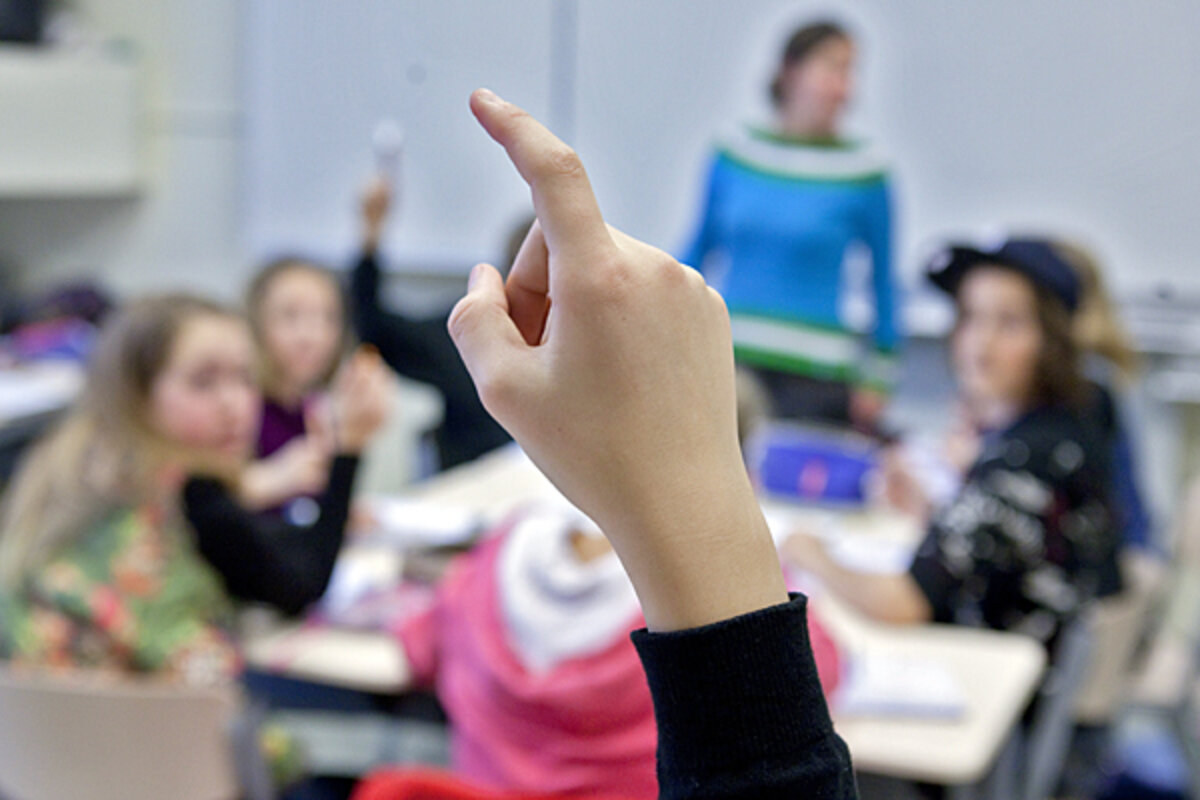'Report card' on science: Most US students aren't 'proficient'
Loading...
On Tuesday night, President Obama is expected to emphasize education – and particularly America’s need to catch up in math and science – in his State of the Union address.
But one national "report card" on test scores, released Tuesday morning, paints a dismal picture of how well the country’s students have mastered science.
Just 34 percent of fourth-graders, 30 percent of eighth-graders, and 21 percent of 12th-graders are performing at or above “proficient” in the most recent snapshot from the National Assessment of Educational Progress (NAEP), which gives science scores from 2009. A very small number – just 1 or 2 percent at each grade level – scored at the “advanced” level, and relatively large numbers of students didn’t even meet the most basic level.
“T��� results released today show that our nation's students aren't learning at a rate that will maintain America's role as an international leader in the sciences,” said Arne Duncan, the US secretary of Education, in a statement. “When only 1 or 2 percent of children score at the advanced levels on NAEP, the next generation will not be ready to be world-class inventors, doctors, and engineers.”
The NAEP science test was revised considerably since the last time students were tested, and the results can’t be compared with previous years. The new framework takes into account scientific advances, science educators say, and does a better job of measuring higher-level scientific thinking. Many questions are open-ended and ask students to design or evaluate experiments, for instance.
“T��� good news is that this is a really great test,” says Alan Friedman, a member of the National Assessment Governing Board and a former director of the New York Hall of Science. But Dr. Friedman says he is especially concerned by the results at the two extremes: the tiny number of students who score at the advanced level and the large number scoring below basic. In fourth grade, 28 percent of students failed to meet the basic level. In eighth grade, the number rose to 37 percent, and at 12th grade, a whopping 47 percent of students didn’t meet the basic score.
“That is distressing,” Friedman says. “T���se challenges are very serious for all of us who are into science education and who want our kids to be prepared for living a full life.”
The NAEP results also showed big achievement gaps between races, income levels, public- and private-school students, and gender.
In fourth grade, for example, there was a 36-point achievement gap (on a 300-point scale) between blacks and whites, as well as a 32-point gap between Hispanic and white students. Boys performed two points better than girls, and private-school students outperformed public-school students by 14 points. Strong correlations were evident between better scores and students whose parents had more education.
“T��� overall performance is bleak, and the gaps are devastating,” says Amy Wilkins, vice president for government affairs at Education Trust, a nonprofit that focuses on narrowing the achievement gap. “Tonight the president is going to talk about the need for innovation to spur us out of these economic doldrums, and it looks like we haven’t given our kids the skills to do that. Science has always been the springboard of American innovation,... and it looks like we’re losing that.”
Also striking are the state-level results – available at the two lower grade levels for all but four states and the District of Columbia. Virtually across the board, the only states that performed better than the national average were located in the northern half of the country, and the states that performed worse than the national average were located in the southern half. A smattering of states all over had scores that were not significantly different from the rest of the nation.
At the fourth-grade level, the top-scoring states were New Hampshire, North Dakota, Virginia, and Kentucky, while Mississippi and California posted the lowest average scores. In Mississippi, 46 percent of fourth-graders failed to score at the basic level.
Those administering the NAEP project are always careful to shy away from drawing conclusions about the cause of achievement. But Friedman says he worries that the low scores may be partly due to an unintended consequence of No Child Left Behind, which led schools to focus almost exclusively on math and reading. He noted correlations between students who score better and factors such as whether their science classes regularly do hands-on activities or whether older students participate in science activities outside school.
He and others discount the idea that science is important only to a small handful of students who go on to a career in science or engineering.
“We want to enable every child to have the problem-solving, thinking, and communicating skills in the sciences so that they can be productive in whatever they choose to do for their field of work,” says Bruce Alberts, editor in chief of Science magazine and former president of the National Academy of Sciences.
In particular, Dr. Alberts says, it’s important that educators and students stop defining science as simply memorizing words that scientists use. Instead, the focus should be on higher-level thinking and scientific inquiry: “It’s learning how to do science and think like a scientist,” Alberts says.
The NAEP results should underscore how important it is to get qualified science teachers in the classroom, says Ms. Wilkins of Education Trust. “We know that at high-poverty, high-minority schools, kids are much more likely to be taking classes like science and math from out-of-field teachers,” she says.




